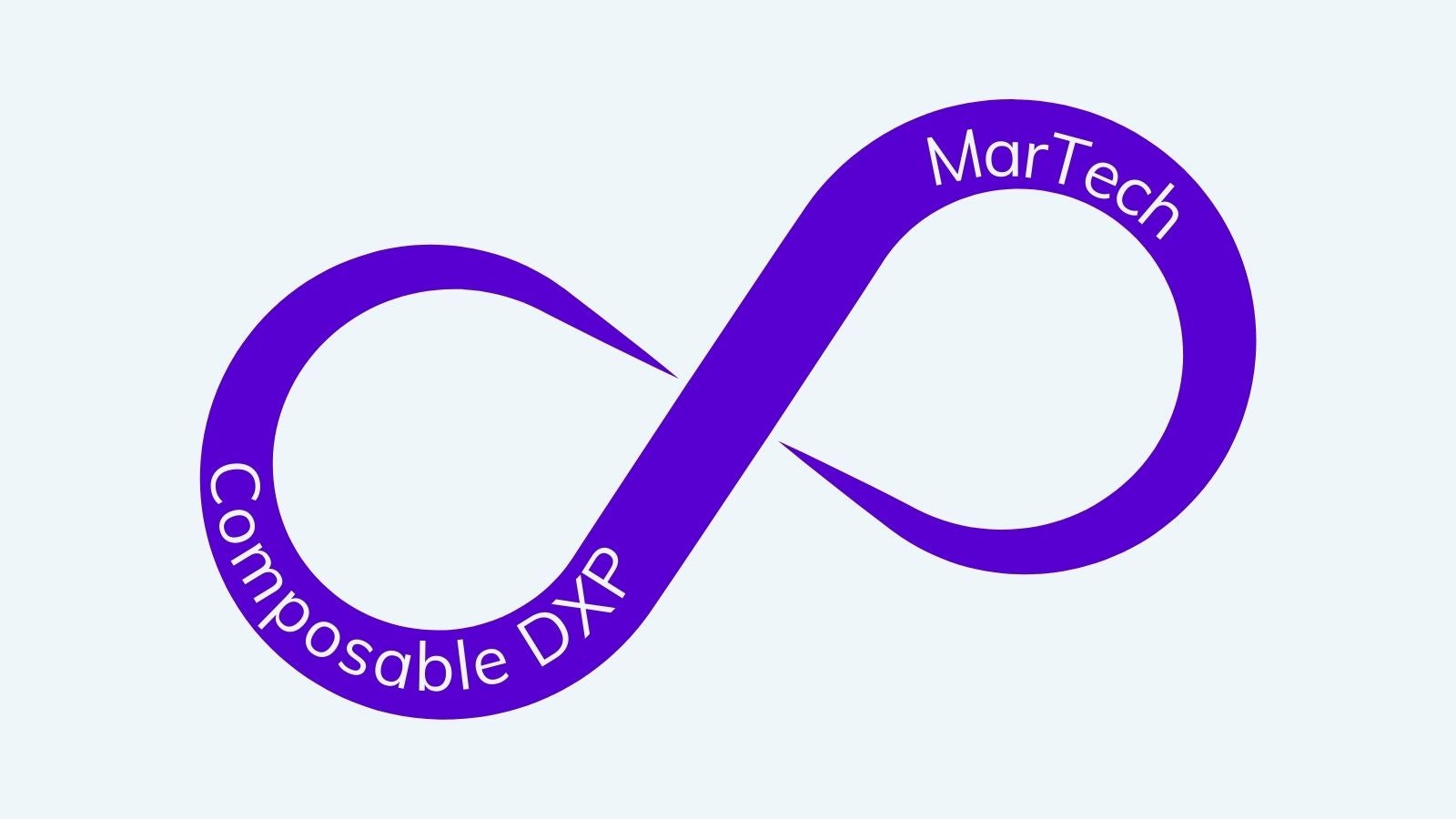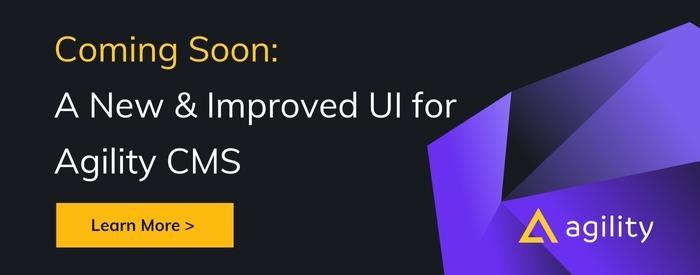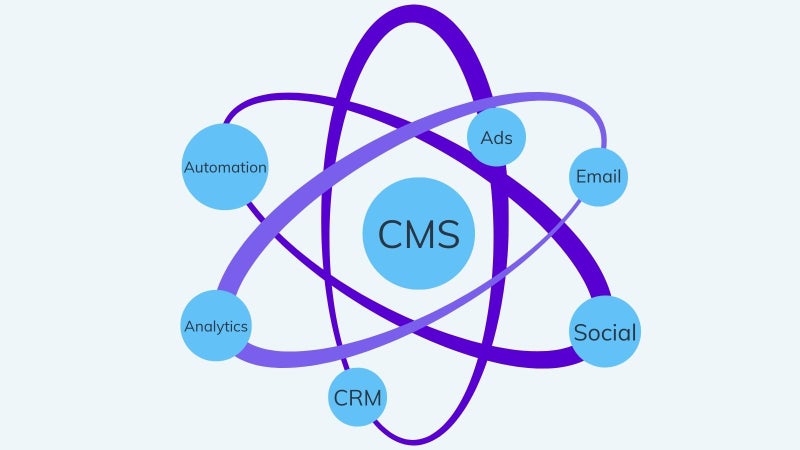We love watching the evolution of marketing technology (MarTech). The idea behind MarTech is that marketing, especially in a digital sense, should become more accessible. Everyone, no matter what role they play in a business, should be able to be a marketer to some degree.
MarTech should make things easier and more efficient for those in marketing roles.
Unfortunately, things are never that straightforward, and even the many benefits of MarTech are still coupled with some challenges. As we see more CEOs integrating technology into their marketing organizations every week, it can be helpful to talk about these potential issues, identifying them for anyone thinking about MarTech adoption or expanded use to prepare them for any bumps in the road.
So please read on for the marketing opportunities and challenges of MarTech as part of your tech stack, as described by marketers who use it!
Martech Trend #1: Embracing and Understanding Composable DXP
Numerous senior marketers have told us that they face a considerable challenge regarding the best ways of approaching the task of automation across their whole marketing function. So what is the best way to evolve your marketing activities into a technical discipline?
We can better phrase the question like this: is a single-point or stack solution the future of marketing?
To break this down further, a single-point marketing platform or piece of software addresses specific customer needs or manages a defined aspect of marketing automation. For example, this could be a social media management platform, content calendar, CMS, data analytics tool, or email program. Single-point solutions should satisfy a need in a single vertical of your marketing activities with software that can be integrated into daily activities through the implementation of a composable DXP.

The challenges with single-point solutions present themselves when overarching integration is needed across big marketing departments. These potential issues can include:
- Compatibility: Does your single-point solution work well with any others you may have?
- Will you have to train your team to use multiple unique programs?
- Is this solution provider big enough to stick around, or will a stack solution one day take it over?
You may be asking why people would consider a single-point solution when it could present the above issues? Well, there are many reasons, including:
- Cost- traditional, all-in-one solutions come with a huge overhead cost for tools that often go unused
- The fact that single-point solutions provide a better, more future-proof service
- The minimized time required for training
- Straightforward daily usage of a solution with fewer bells and whistles
Solution?
Migrating to a composable DXP can be intimidating and the benefits are still somewhat vague.
With Agility CMS, the foundation of a composable DXP, building your MarTech stack has never been easier.
We have lots of resources to help you learn, and we're always here to chat!
Martech Trend #2: CMOs defining the MarTech stack
The flipside of our first point is a CMO who rejects a suite of standalone products, opting instead for the "stack solution." Particularly for larger companies, the idea of one marketing platform that offers all the functionality needed to satisfy every activity is a tempting option. A stack solution combines otherwise disparate single-point solutions into one overarching program that becomes the be-all-and-end-all.
Marketers can add even more functionality to companies with numerous employees or locations to access the programs in their stack from any computing device when their organization uses desktop virtualization solutions. The stack and even the operating system behind it can operate in the cloud, saving RAM and making the stack responsive to anyone in the marketing department in whatever time zone they may occupy.
This rids companies of many pesky issues; you only have to worry about one piece of software, one training session, and one home base in which all assets, plans, and metrics live. Sounds perfect, right? Well, once again, reality has something different to say. One size doesn't always fit all, and many marketers find that the nuanced, constantly evolving needs of their strategy, business, and consumers are better served by single-point solutions.
What is a MarTech Stack?
CMOs will define what is required from a MarTech stack, a top-down approach that either work for or against the adoption of single-point solutions. The idea of a stack sounds better, but finding the best fit for your needs can be tricky. The best bet may be finding a stack solution startup happy to customize their software to remove your pain points and working with CMOs to discover how to serve their needs best.
Martech Trend #3: Virtual Reality
It's no secret that VR is a significant new aspect of marketing that cannot be ignored. Including this immersive experience in your social media strategy and applications means that like it or not, marketers need to include VR in their focus.
This means adding time and budget, figuring out mobile strategies, and learning another additional leg of marketing in a digital world. The biggest problem? The layer of complexity that VR adds and the race to be original with your ideas that incorporate it. And no, a branded Snapchat filter will not cut it.
The biggest questions that VR raises for marketers are:
- How does VR affect brand marketing, advertising, content production, and UX?
- What is the best way to incorporate VR?
- Do you partner with startups or more prominent players to achieve innovation in the VR space?
The answers will vary and may not be available right now, but VR must be front-of-mind for CMOs and incorporated into your strategy at some point. It is essential to think beyond social media and apps and consider how it may work with landing pages and lead magnets, digital ads, and email communication in the future, as these channels will surely be part of the VR evolution.
Martech Trend #4: Moving from TV to video
You no doubt deal with traditional marketers who struggle more than usual with adopting the digital strategy and MarTech; you may even be one! It is vital to recognize that mobile and social are the new channels of discovery for television, and where and how to watch video has become a choice with many possibilities.
This shift in behavior has marked the decline of traditional TV but created a new landscape of original programming. New models like TubeMogul offer programmatic media buying across digital video channels to make it easier for marketers to move with these shifting consumer habits. From original programming to clips and on-demand video content, marketers must understand and incorporate video into their brand marketing strategy more than ever. A bit ironic when "TV" is no longer considered a primary outlet, isn't it?
Yes, this means you need Tik-Tok and the ability to easily manage more than one social media account in your MarTech stack. But it's also the simple acknowledgment that consumers have all of the power, and video is a popular medium, especially for millennials who choose what and when they watch across multiple devices. According to recent stats, 14.9 percent of Millennials watch 10 to 20 hours of online video per week. Additionally, 88% of Americans are engaging with another device while watching TV.
This affects every element of marketing and brand advertising, creating new opportunities for those who are clever enough to take traditional TV strategies and adapt them for modern video models.
Martech Trend #5: Evolution to new models
So we've established it's a new world, and the marketing agency model for development and implementation needs to adapt and be agile to handle recent trends and developments in technology. Traditional agencies that hold on to old models will quickly surpass those that embrace digital evolution.
A focus on technology platforms that deliver unique, personalized content across any device is a must. For the tricky part, MarTech will continue to evolve, which can be frustrating for companies who sink a lot of time and money into a platform or piece of software that "does the job." At which point do you swallow your pride, admitting that there may be a new model out there that, while it may take some time and frustration to switch to, will offer a better experience moving forward?
One way to get through this forest is to hire a trail guide — an agile marketing agency with solid tech skills. They're more prepared to embrace change and adapt to the latest technologies than your company might be. You can benefit from their leadership during times of market change, such as we have now and will continue to have for the next decade. And in concert with them, you can try out evolving solutions before making a heavy in-house investment in any one technology or expensive SaaS solution.
How to adapt beyond that is a question CMOs will face over and over again throughout the coming decade as Artificial Intelligence (AI) and Machine Learning (ML) transform how we collect, sort, apply, and interpret data of all kinds, but mainly related to consumer behavior. AI will transform the tools marketers use to run marketing operations and create a worthwhile customer experience, and it will also change the landscape those tools are intended to impact, such as search engines, social media sites, product design and delivery, and how purchases are transacted.
AI will make the marketing landscape much more competitive, as the race to market and the appeal to consumers may come down to which company has the most innovative automated technology doing its promotional work. That means marketing will be populated by more and more technologists with an array of specialties that, so far, we can only imagine.
These are issues that CMOs will face continually, and it will be essential to recognize which options offer an improvement that is worth the investment.
Your MarTech stack is still worth your time.
Martech is important for marketers who want to work more efficiently and streamline workflows, data and processes, and data. MarTech's mission is unlike any other. Marketers benefit from a well-thought-out MarTech stack, and the investment of time to achieve this is well worth it.
The key to this is considering these six focus areas in your stack:
- Tools and approaches that require constant change
- Capturing and organizing your data
- Effective operations
- The customer experience
- Performance of your stack
- The imagination and proficiency of your team and how they manage the software
Your MarTech stack should help you create automated processes that usually take up much time. Get rid of repetitive tasks such as converting file formats and pulling data while making a streamlined and transparent process of accessing information and improving communication across teams. This allows for better, more informed decisions and an improved way to connect with your target demographic.
When you have ironed out the bumps and pain points with a cohesive stack that achieves all of the above, you pave the way for creative thinking and unique, effective marketing strategies. Best of luck!





